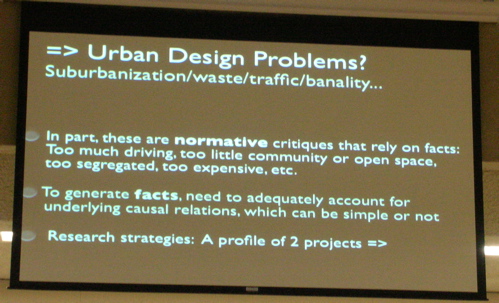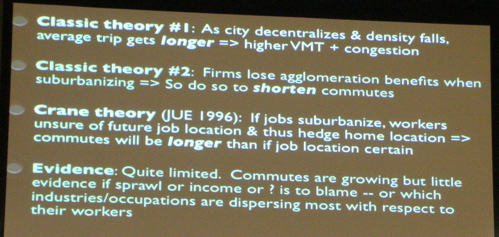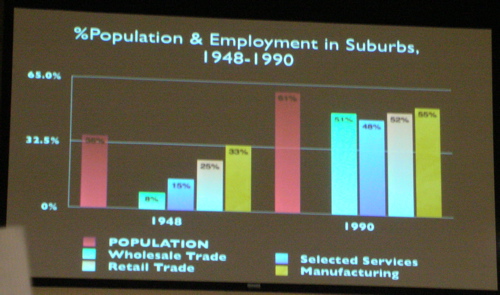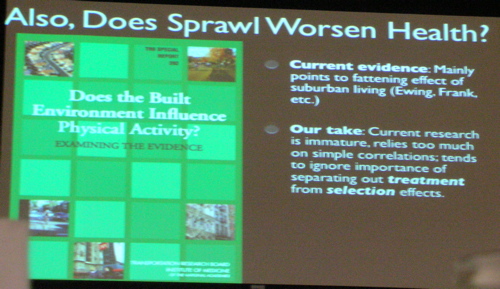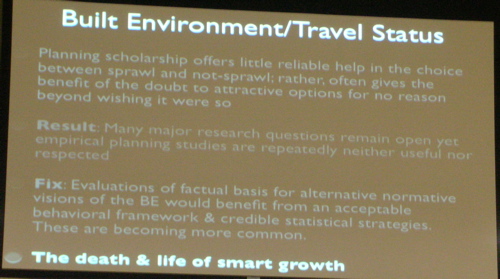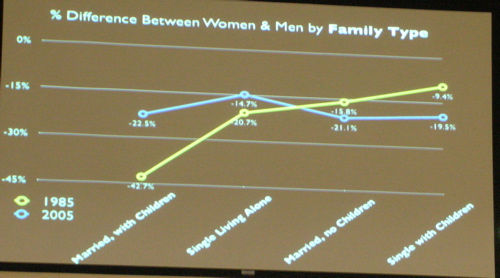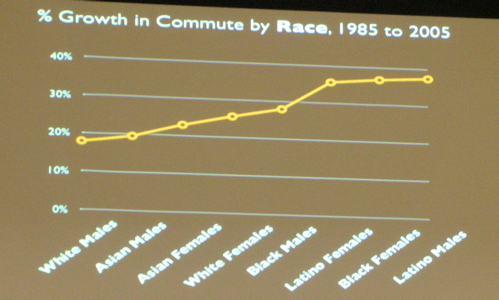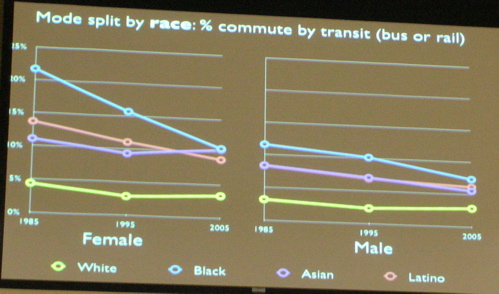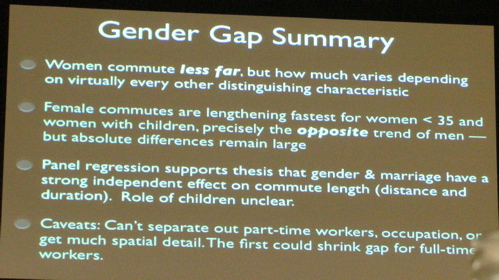Randall Crane Lecture at the University of Toronto at Mississauga
2 February 2007
Sex, Lies, and Commuting in the U.S., 1985-2005
The following photos are of a selection of slides from Randy's presentation. Selection was based on whether I thought they might eventually be useful for my CIP, and whether or not I was getting more little sandwiches from the buffet. Taken from a distance with the zoom setting and dodging people's heads and Danielle's waterglass, these are not the most attractive photos you'll ever see, but are at least legible, especially if you view the photos full size by clicking on the icon twice (in Firefox) or on the icon in the lower right corner (in IE).
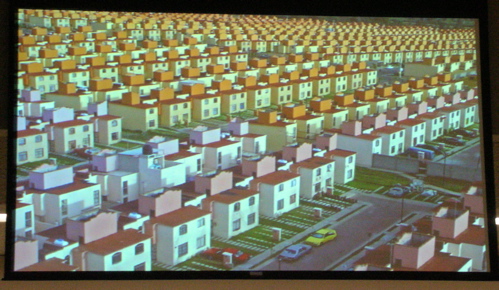
Masters of Science in Planning Candidate
Department of Geography, University of Toronto
Updated 10 February 2007. Best viewed on Firefox.
